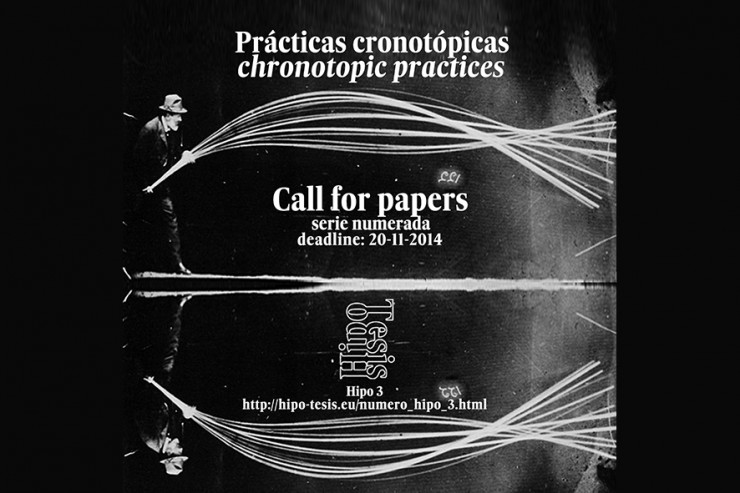
HipoTesis Numbered Issues is searching for collaborations for Hipo 3 in the form of texts between 3500 and 5000 words defining sceneries for actions involving a trajectory of spatial-temporary places, architectural sequence shots describing spatial tactics developed from one or various scales and certain rhythms.
Michel de Certeau has meticulously described some actions or conventional practices as strategies capable of inventing spaces, ways of doing things as mechanisms generating unprecedented spatial comprehension. Practicing space is therefore a way of generating new programs associated to specific actions. Space conceived as a mobility crossing or as a practiced place/location. Thus, in the tale Ghost Flat (A Modern Couple), Marie Darrieussecq describes the reality of a minimal living space through a series of everyday practices. The path exposed by the situations induces an understanding of the ghost apartment, which allows transformations in the uses, stemming from the variation in wavelength of the light in those spaces occupied by its inhabitants.
Besides, the notion of limit – spatially but also temporarily – implies a border condition that generates by itself a negotiation feature. The limit becomes a negotiation field for the elements it separates, whether they are spatial or related to a progression in time.
Finally, a sequence in time may also lead to a spatial trajectory with a certain rhythm, an architectural cadence. In this way, the particularity of a certain rhythm implies not only a spatial progression but also a temporal one. Architecture must display a territory for experimentation that allows a possibility to adapt –spatially and temporarily- to different ways of doing things by its inhabitants. A domestic action, periodic or not, travels through this space and also builds it.
These three generic perceptions of the relationship between space and time –the creation of programs from practise, the limit as a spatial-temporal negotiation, and rhythm as a result of a specific chain of events- must be explored from the account of architecture and project; in the same way that literary practise connects time “cronos” with space-place/location “topos” in the reader’s imagination. Chronotopos as an expression of the indissoluble character occurring between space-place/location and time.
Keywords: space-time, spatial rhythms, spatial changes, sequence of places/locations, project procedures, project strategies, architectural phases, spatial travels, spatial interruptions, temporal constructions, temporal places…
References:
BAJTÍN, Mijaíl, “Las formas del tiempo y el cronotopo en la novela”, en Teoría y estética de la novela. Trabajos de investigación. Taurus. Madrid, 1989 (pp. 237-409).
CERTEAU, Michel de, La invención de lo cotidiano I. Artes de hacer. Universidad Iberoamericana (Departamento de Historia). Biblioteca Francisco Xavier Clavigero. Instituto Tecnológico y de Estudios Superiores de Occidente. México D.F., 2000.
DARRIEUSSECQ, Marie, “Ghost Flat (A Modern Couple)”, en DARRIEUSSECQ, Marie, DÉCOSTERD, Jean-Gilles y RAHM, Philippe, Ghost Flat. Centre for Contemporary Art Kitakyushu. Kitakyushu (Japón), 2005.
GAUSA, Manuel, Open. Espacio, tiempo, información. Arquitectura, vivienda y ciudad contemporánea. Teoría e historia de un cambio. Actar. Barcelona, 2009.
GIEDION, Sigfried, Espacio, tiempo y arquitectura. Origen y desarrollo de una nueva tradición. Reverté. Barcelona, 2009.
MUNTAÑOLA, Josep, “Arquitectura, educación y dialogía social”, en Revista española de pedagogía nº 228. Instituto Europeo de Iniciativas Educativas. Madrid, mayo-agosto 2004, año LXII (pp. 221-228).
PARDO, José Luis, Sobre los espacios. Pintar, escribir, pensar. Ediciones del Serbal. Barcelona, 1991.
More information here.
